
Are you acquiring a wooden floor and looking for the right decor? Try the universal yet generous 2-strip pattern...
Trends are also prevailing in wooden coverings, and the possibilities are endless; you just need to choose wisely.
Wooden floors can be discussed from various perspectives, ranging from more technical topics to design and functionality. However, these thematic areas are usually not strictly separable, and thus we encounter information about floor construction, wood species, surface treatment, and maintenance methods in articles, with varying emphasis. A frequently discussed topic is also the trends that wooden coverings are following.
And although wooden floors follow trends less intensely than furniture or wall colors, representing a more timeless element in interiors, we can observe, according to Ing. arch. Jan Kratochvíl, an architect and editor-in-chief of the professional architecture portal Archiweb.cz, a greater willingness to experiment and choose coverings made from atypical wood species with dramatically plastic textures for their interiors. "Currently, we observe interest in single-layer boards with surface finishes that highlight the natural beauty of raw wood, specifically with intentional surface 'damage' from production, brushed and stained textures, treated with oil, glaze, or varnish," adds Jiří Blažek from Kratochvíl parket profi.
Despite the clear "language" of trends, when choosing any material, our wishes, requirements, and the overall concept and architectural design of the interior are paramount. Besides the well-known single-layer boards, which are better suited for large spaces as their standard and maxi format stands out better, three-layer coverings are also quite popular. Due to their finer patterns, they are more universally applicable, ideally for smaller spaces. However, unfortunately, the very impressive two-layer decor is often overlooked, which is highly versatile and fits almost anywhere. "I increasingly favor two-layer floors. In my projects, I always strive to design a unified floor that creates a seamless connection between all rooms, and this type of wooden multi-layer floors meets my requirements. The two-layer decor evokes the look of traditional solid tongue-and-groove flooring and conveys a sense of solidity," explains Jan Kratochvíl.
Wood in the role of a beloved and continually reworked staple
Despite all expert recommendations and unwritten rules, it is essential to realize that every interior has a specific atmosphere, and there is no universal recipe for its design or material execution. Therefore, it always depends on the personal preferences of each of us. Wooden floors can be classified as traditional types of flooring, as their range continues to expand, from the first board floors, through solid tongue-and-groove flooring, to timeless and environmentally friendly multi-layer wooden floors with various types of surface finishes; they will always be popular and functionally reliable. The natural atmosphere of wooden floors cannot be replaced by even the best imitation of laminate or vinyl. From the perspective of surface treatment, interest in oiled decors has grown, which, although more demanding in maintenance compared to lacquered ones, highlight and emphasize the natural beauty of the wood. It is good to carefully consider their choice before making a final decision. Every expert should point out the pros and cons of different types of flooring, and for the necessary information, you can turn to specialized networks such as 1 FLOOR.
The Kährs virtual showroom will help you navigate from the comfort of your home
If you are unable to decide between a single-layer or three-layer decor for any reason, try opting for the two-layer pattern. In the product range of Kratochvíl parket profi, which specializes exclusively in multi-layer coverings, there are 36 decors available from 6 different collections. Wood species include oak, beech, walnut, cherry, ash, and maple. In addition to traditional multi-layer floors with a thickness of 15 mm, slim 7 mm planks are also recommended, which are easier to install in spaces with limited construction height. Coverings can be laid floating since the majority of collections are already equipped with a locking joint from production, or they can be fully glued to the substrate. As can be seen, the options are endless, but decision-making can often be more complex for many of us. Apart from designers, architects, or technicians from flooring studios who can provide expert advice, you can gain initial inspiration by "visiting" the Kährs virtual showroom, which is available in Czech at www.kpp.cz.
For more information on wooden multi-layer coverings, visit www.kpp.cz.
And although wooden floors follow trends less intensely than furniture or wall colors, representing a more timeless element in interiors, we can observe, according to Ing. arch. Jan Kratochvíl, an architect and editor-in-chief of the professional architecture portal Archiweb.cz, a greater willingness to experiment and choose coverings made from atypical wood species with dramatically plastic textures for their interiors. "Currently, we observe interest in single-layer boards with surface finishes that highlight the natural beauty of raw wood, specifically with intentional surface 'damage' from production, brushed and stained textures, treated with oil, glaze, or varnish," adds Jiří Blažek from Kratochvíl parket profi.
Despite the clear "language" of trends, when choosing any material, our wishes, requirements, and the overall concept and architectural design of the interior are paramount. Besides the well-known single-layer boards, which are better suited for large spaces as their standard and maxi format stands out better, three-layer coverings are also quite popular. Due to their finer patterns, they are more universally applicable, ideally for smaller spaces. However, unfortunately, the very impressive two-layer decor is often overlooked, which is highly versatile and fits almost anywhere. "I increasingly favor two-layer floors. In my projects, I always strive to design a unified floor that creates a seamless connection between all rooms, and this type of wooden multi-layer floors meets my requirements. The two-layer decor evokes the look of traditional solid tongue-and-groove flooring and conveys a sense of solidity," explains Jan Kratochvíl.
Wood in the role of a beloved and continually reworked staple
Despite all expert recommendations and unwritten rules, it is essential to realize that every interior has a specific atmosphere, and there is no universal recipe for its design or material execution. Therefore, it always depends on the personal preferences of each of us. Wooden floors can be classified as traditional types of flooring, as their range continues to expand, from the first board floors, through solid tongue-and-groove flooring, to timeless and environmentally friendly multi-layer wooden floors with various types of surface finishes; they will always be popular and functionally reliable. The natural atmosphere of wooden floors cannot be replaced by even the best imitation of laminate or vinyl. From the perspective of surface treatment, interest in oiled decors has grown, which, although more demanding in maintenance compared to lacquered ones, highlight and emphasize the natural beauty of the wood. It is good to carefully consider their choice before making a final decision. Every expert should point out the pros and cons of different types of flooring, and for the necessary information, you can turn to specialized networks such as 1 FLOOR.
The Kährs virtual showroom will help you navigate from the comfort of your home
If you are unable to decide between a single-layer or three-layer decor for any reason, try opting for the two-layer pattern. In the product range of Kratochvíl parket profi, which specializes exclusively in multi-layer coverings, there are 36 decors available from 6 different collections. Wood species include oak, beech, walnut, cherry, ash, and maple. In addition to traditional multi-layer floors with a thickness of 15 mm, slim 7 mm planks are also recommended, which are easier to install in spaces with limited construction height. Coverings can be laid floating since the majority of collections are already equipped with a locking joint from production, or they can be fully glued to the substrate. As can be seen, the options are endless, but decision-making can often be more complex for many of us. Apart from designers, architects, or technicians from flooring studios who can provide expert advice, you can gain initial inspiration by "visiting" the Kährs virtual showroom, which is available in Czech at www.kpp.cz.
For more information on wooden multi-layer coverings, visit www.kpp.cz.
The English translation is powered by AI tool. Switch to Czech to view the original text source.
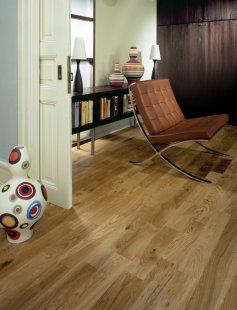
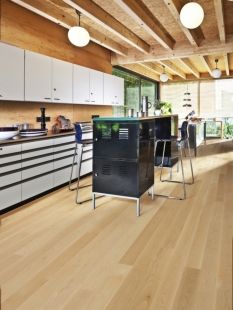
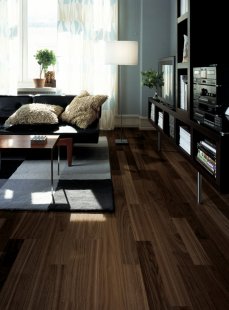
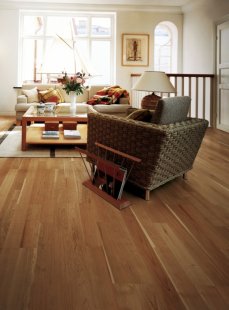
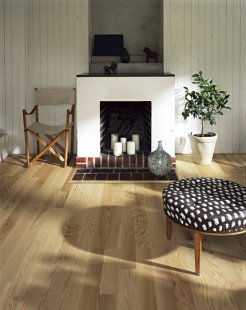
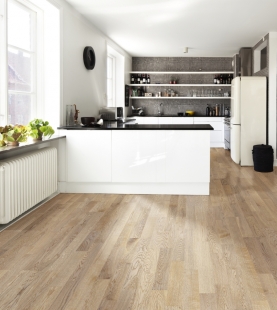
0 comments
add comment
Related articles
0
04.11.2011 | "Beauty with a Conscience": The motto of the new World Collection of wooden floors by Kährs inspired by exotic woods
0
11.07.2011 | The wooden parquet floors Bauwerk from the CleverPark collection are tailor-made for underfloor heating
0
16.05.2011 | The new décors of the Spirit series with a low construction height of just <nobr>10.2 mm</nobr> will delight fans of rustic atmosphere
0
14.03.2011 | New rustic Kährs Da Capo collection – wooden floors that age with grace













